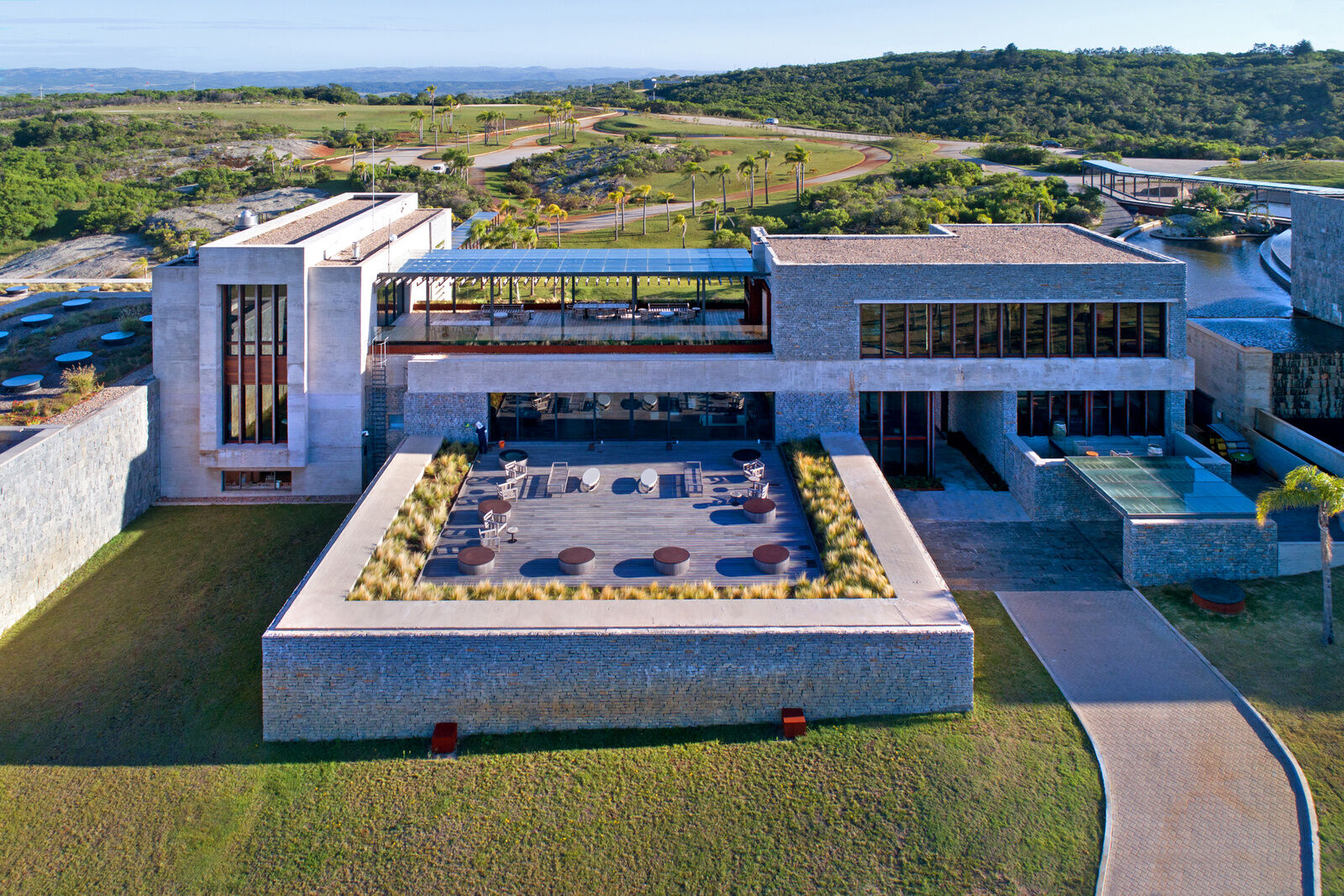Bodega Garzón is located 60 km from Punta del Este, Uruguay. It is a vineyard that produces wines of high international quality with environmentally friendly processes while providing its visitors with the enjoyment of sociability in an architectural and natural landscape.

The winery covers 15,240 m2 and has a capacity to annually produce 500,000 litres of wine. It includes a social sector with a restaurant, a wine bar, a multipurpose room, a lounge and a club with international membership.

In the middle of 240 hectares of winding vineyards, the architecture adapts to the topography and its scale is subordinated to the landscape. The complex has a linear and articulated shape, which sinks in the winery part and extends over a natural balcony in the tourist area, looking at the vineyards from above.

The architecture uses exposed concrete and local stone, steel, dark glass and wood for the social areas.

While the warehouses are closed orthogonal boxes, the social areas have angles and orientations, which provide different visuals and experiences of the place. The circulations for the tourists are experiential routes and so they are planned and designed. One of the most representative ones is the one that visits the underground cellars where the wines are conserved.

The study of the rocky subsoil was complex and there was not enough data at the time of the project, so these spaces could only be defined at the construction stage and adapted to the hollows formed by the extraction of the earth. The result was an area of organic form, where natural rocks and architectural structure are combined. This space has great sensory value due to the handling of light and shadow, textures and moisture exuded by the rock mass, which on the other hand required a surface drain for the floor, used as a design theme.

This project links architecture, nature, crops, industry and tourism with environmental and energy sustainability criteria. LEED standards have been applied in the definition of materials, technologies and processes, in the use of renewable energies (especially wind) and in the treatment of industrial effluents. Green roofs have been used to reduce the impact of solar radiation on the interiors and to save energy, but also their emblematic designs with native flora and other ecologically friendly species create interesting terraces that integrate into the surrounding landscape.

Technical data:
Liters: 2.200.000 l.
Built area: 15.240 m2
Costumer: Agroland S.A.
Project manager: Carlos Hartmann, architect, LEED AP / Samconsult
Architectural project: Eliana Bórmida y Mario Yanzón, architects.
Architectural project manager: Gustavo Albera, architect.
Architectural team: Laia Reynals, Alejandro Cohen, Agustín Palmada, Mauricio Cremaschi, Silvana Sevilla, Juan Manuel Schenone, architects.
Site manager: Bormida & Yanzon / Samconsult
Interior architecture: Backen, Gillam & Kroeger Architects
Project manager interior architecture: Cristof Eigelberger, architect.
Team: Carleigh Simpson, Steve Elerding, Matthew Enering, Cassondra Stevens
Structural Engineer: Juan Camps y Asociados, engineers.
Sustainability and LEED Certification Advisory: Carlos Hartmann, architect, LEED AP / Muriel Alvarez, architect, LEED GA / Samconsult
Main constractor: Kentisur S.A.
Site manager: Alejandro Biq
Technical assistance work: Sebastian Rodriguez, engineer. Marcelo Cardozo, Gabriel Fernandez, architect.
Landscaping project: Eduardo Vera
Executive project Landscaping: Inscape - Landscape
Electrical project: Electromecánica Bottino
Lighting design: Arq. Pablo Pizarro & Asociados / Backen, Gillam & Kroeger Architects
Advisory Process: Mario Japaz, engineer / Mattura
Termomecánica Project (Comfort): Mario Pedro Hernandez, engineer
Termomecánica Project (Industry): Estudio Grinberg
Fire Project: Flama SA
Project Weak signals: NB Consultores
Water and sewer facilities: Estudio Labonia y Asociados




































